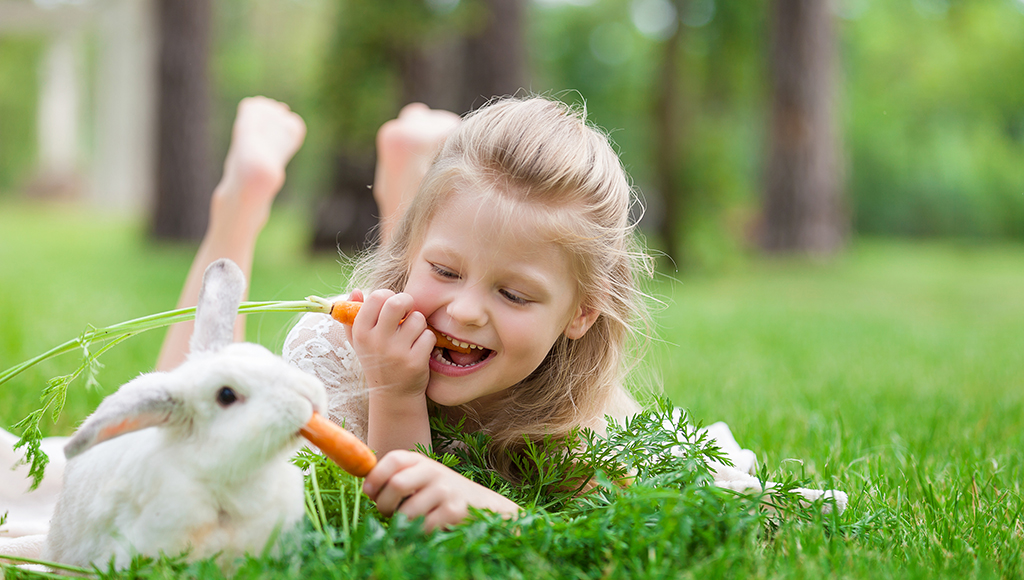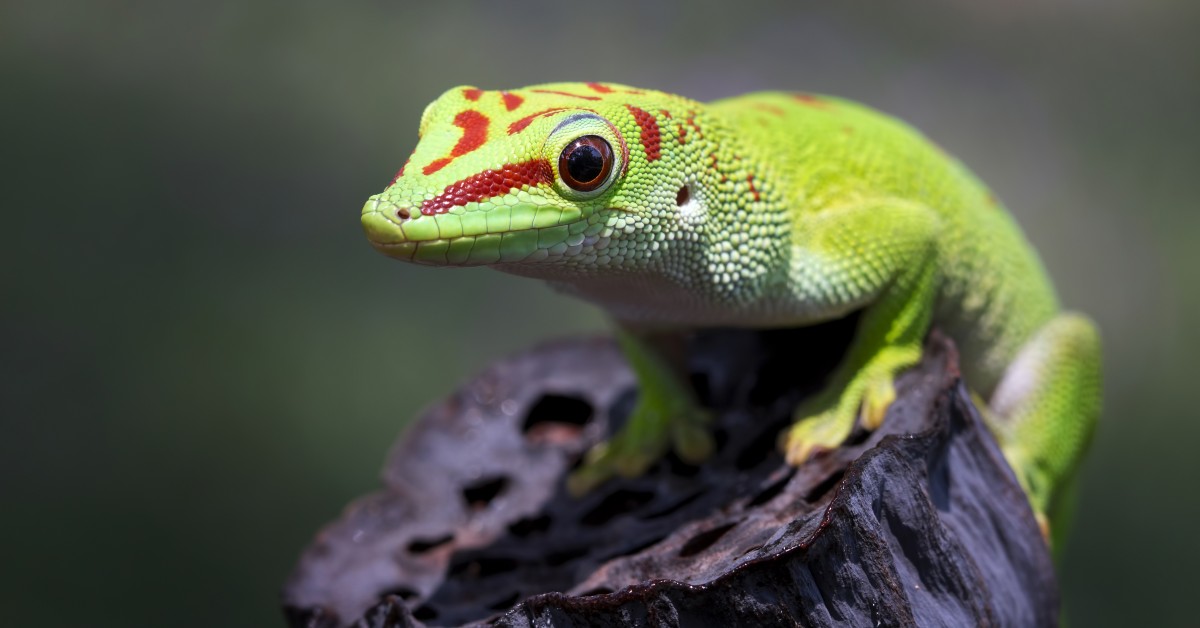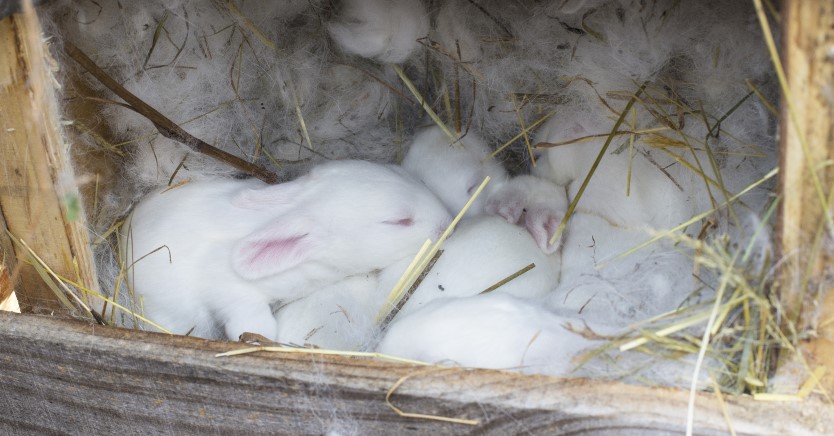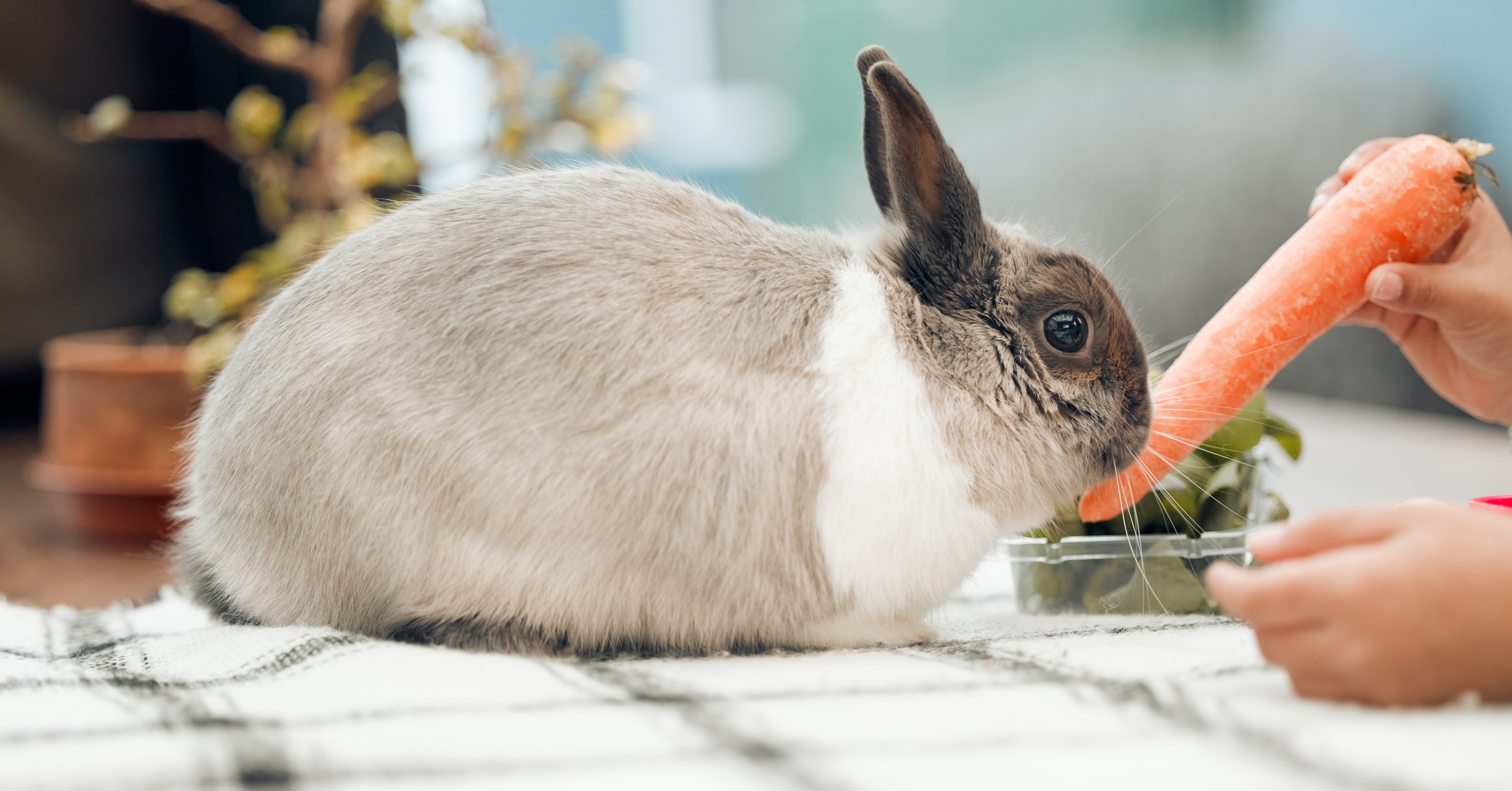Beginner Care For Rabbits
Rabbits may be easy to love, but they are not quite as easy to care for.

Rabbits may be easy to love, but they're not quite as easy to care for. These lovable, social animals are wonderful companions for people who take the time to learn about their special needs. Though providing care for these adorable creatures isn't difficult, rabbits can live for up to 10 years, and have very specific care requirements. Anyone considering adding a rabbit to their family should carefully research the care of these animals before making a decision. We’ll share some basic information to help you get started.
Indoors or Outdoors?
Every rabbit owner should know that the safest place for a rabbit to live is indoors. Rabbits should never be kept outdoors! Domestic rabbits are different from their wild relatives and they do not tolerate extreme temperatures well, especially the hot summer months. Even in a safe enclosure, rabbits are at risk from predators. Merely the sight or sound of a nearby wild animal can cause rabbits so much stress that they can suffer a heart attack and literally die of fear.
Caged or Roaming?
Whether you decide to let your rabbit roam free in your entire home or just a limited area, it is important that you make everything rabbit-safe. One little bunny can easily find a whole lot of trouble in an average home. Because rabbits like to chew, make sure that all electrical cords are out of reach and outlets are covered. Chewing through a plugged-in cord can result in severe injury or even death. Poisoning can occur if the wrong objects are left in the open or in unlocked low cabinets. Aside from obvious toxins like insecticides, rodenticides and cleaning supplies, be aware that common plants such as aloe, azalea, Calla lily, Lily of the Valley, philodendron, and assorted plant bulbs can be poisonous to rabbits.
If kept in a cage, rabbits need a lot of room to easily move around. A rabbit's cage should be a minimum of five times the size of the rabbit. Your rabbit should be able to completely stretch out in his cage and stand up on his hind legs without bumping his head on the top of the cage. Additionally, cages with wire flooring are hard on rabbits' feet, which do not have protective pads like those of dogs and cats. If you place your rabbit in a wire cage, be sure to layer the floor with cardboard or other material. Also remember to place a cardboard box or "rabbit condo" in the cage so the bunny has a comfortable place to hide. Respect your animal's need for quiet time too (rabbits usually sleep during the day and night, becoming playful at dawn and dusk).
Even rabbits that are kept in a cage need to be let out for several hours each day for exercise. Aside from running and jumping, rabbits also enjoy exploring their surroundings. This is an ideal time to play and interact with your rabbit. Make sure that he has a safe area to play and explore.
Can you housebreak a rabbit?
Just like cats, rabbits can easily learn to use a litter box. Place a litter box in the cage to encourage this behavior. If your rabbit is allowed to roam freely through multiple rooms of your home, it's a good idea to have litter boxes in several places. Many rabbits enjoy spending time relaxing in their litter box, so make sure that it is of ample size and kept clean. For bedding (litter), stay away from wood shavings, especially cedar and pine, which may cause liver damage or trigger allergic reactions in rabbits. Also avoid clumping or dusty kitty litters, which can cause serious health problems if eaten. Instead, stick with organic litters made of paper, wood pulp, or citrus. Finely shredded newspaper can work too, but may not be as absorbent. Be sure to put fresh hay in the litter box daily, as many rabbits like to have a snack while sitting in their litter box.
A Balanced Diet
Rabbits have complex digestive systems, so it's very important that they receive a proper diet. Many health problems in rabbits are caused by foods that are incompatible with their digestive physiology. A basic rabbit diet should consist of the following foods:
-
Hay - Rabbits need hay, specifically
Timothy grass. Rabbits should have access to a constant supply
of this hay, which aids their digestive system and provides the
necessary fiber to help prevent health problems such as hair
balls, diarrhea and obesity. Alfalfa hay, on the other hand,
should only be given to adult rabbits in very limited
quantities, if at all, because it's high in protein, calcium
and calories.
-
Vegetables - In addition to hay, the basic
diet of an adult rabbit should consist of leafy, dark green
vegetables such as romaine and leaf lettuces, parsley,
cilantro, collard greens, arugula, escarole, endive, dandelion
greens and others. Variety is important, so feed your rabbit
three different vegetables at a time. When introducing new
veggies to a rabbit's diet, try just one at a time and keep
quantities limited until you see how your rabbit handles
it.
-
Fruits and Treats - While hay and vegetables
are the basis of a healthy diet, rabbits also enjoy treats.
Cartoons and other fictional portrayals of rabbits would lead
us to believe that carrots are the basis of a healthy rabbit
diet. Many rabbits enjoy carrots, but they are a starchy
vegetable and should only be given sparingly as a treat. Other
treats your rabbit might enjoy are apples (without stems or
seeds), blueberries, papaya, strawberries, pears, peaches,
plums or melon. Extra-sugary fruits like bananas, grapes, and
raisins are good too, but should be given on a more limited
basis.
-
Foods to Avoid - With such sensitive digestive
systems, there are a number of foods that rabbits should avoid
eating. These include iceberg lettuce, tomatoes, cabbage, corn,
beans, peas, potatoes, beets, onions, rhubarb, bamboo, seeds,
grains and many others. Also, don't feed your rabbit chocolate,
candy, anything moldy or most human foods. If you are not sure
about a certain food, ask your rabbit's veterinarian.
-
Pellets - If you choose to make pellets a part
of your rabbit's diet, it is best to use them as a supplement
to the dark green, leafy vegetables, not as a substitute. These
pellets should only be given in small quantities (1/8 -1/4 cup
per five pounds of body weight per day, spread out over two
daily feedings). Also, make sure to purchase Timothy-based
pellets. Many brands of rabbit feed contain seeds, corn and
other foods that are too high in calories to be the basis for a
healthy rabbit's diet.
- Water - Rabbits should always have an ample supply of fresh water available. Be sure to change your rabbit's water at least once each day. Water can be kept in a sipper bottle or bowl. If you use a sipper bottle, watch new rabbits to make sure they know how to use the bottles, and clean bottles daily so the tubes don't get clogged. If you use a bowl, make sure that the bowl is heavy enough to avoid tipping and spilling.
Chewing
Chewing is part of a rabbit's natural behavior, but it doesn't have to be destructive. To keep rabbits active and amused, you may want to put untreated wood blocks or cardboard in their cages (Be sure to remove any staples or tape from cardboard first!). Bowls, balls and rings made of willow wood are big hits with many rabbits and can be purchased online or in specialty stores. You can also use paper-towel rolls, toilet-paper rolls, and other chewable cardboard materials that can be tossed in the trash once they've served their purpose. Avoid objects with sharp edges, loose parts, or soft rubber that rabbits could chew into pieces and swallow.
Handle With Care
Rabbits are fragile animals who must be handled carefully. Their bones are so delicate that the muscles in their powerful hind legs can easily overcome the strength of their skeletons. As a result, if not properly restrained, struggling rabbits can break their own spines.
To pick up your rabbit, place one hand underneath the front of the rabbit and the other hand underneath his back side, lifting him carefully with both hands and bringing him against your body. Never let a rabbit's body hang free, never lift by the stomach, and never pick a rabbit up by his ears.
Don't forget that rabbits are prey animals and many will not enjoy being picked up. Be sure to go slowly with your rabbit and practice. Let your rabbit get accustomed to being handled.
Rabbits groom each other around the eyes, ears, top of the nose, top of the head, and down the back, so they'll enjoy it if you pet them on their heads. Like any animal, each rabbit will have an individual preference about where he likes to be touched. Rabbits lack the ability to vomit or cough up hairballs like cats, so try to remove loose fur when you have the opportunity to do so. Simply petting or brushing your rabbit for a few minutes each day should remove most of the excess fur. Some rabbit breeds, such as angoras, have extra grooming needs because of their distinctive coats.
A Trip to the Vet
Just like cats and dogs, rabbits need to receive proper medical care, including annual check-ups. While there are plenty of veterinarians who are able to treat cats and dogs, the number of veterinarians able to treat rabbits is much smaller. It is extremely important that any veterinarian treating a rabbit has experience with rabbits. Many veterinarians who treat rabbits will be called "exotics" veterinarians, meaning that they treat a number of non-traditional pets. Make sure that you have a regular, rabbit-savvy veterinarian as well as a listing of emergency clinics in your area that treat rabbits.
Spaying or neutering your rabbit is very important. Aside from preventing unwanted litters of kits, spaying or neutering has health and behavior benefits. Neutering males eliminates the risk of testicular cancer and can reduce aggression and territory-marking behaviors. Female rabbits have extremely high rates of reproductive cancers as they get older, but spaying them can eliminate those potential problems.
Temperament
Rabbits are social animals and most will be much happier as a part of a pair or trio than on their own. If you don't have a rabbit yet, consider adopting a bonded pair instead of a single rabbit. Most animal shelters and rabbit rescue groups have pairs available for adoption. If you already have a rabbit, you should consider adding another one to the family. Local rabbit groups can usually find a good match for your rabbit and help with the introduction and bonding process.
When thinking about adding a rabbit to your family, please remember that rabbits are not toys and they are typically not appropriate pets for children. Rabbits are complex creatures—socially, psychologically, and physiologically. They require a great deal of special care and supervision. If you make the decision to add rabbits to your family, please don't buy from a pet store; instead, adopt from your local animal shelter or rabbit adoption group.
Ready to start saving money on pet wellness care?
Then take a look at Mint Wellness, the pet wellness plan that provides fast reimbursement on routine pet care. Save on vaccinations, wellness exams, preventatives, dental, and more!
Learn More


